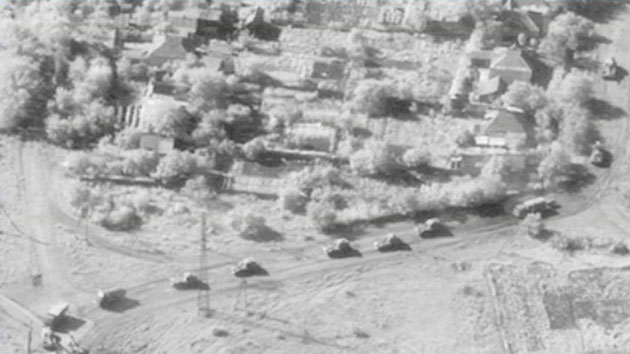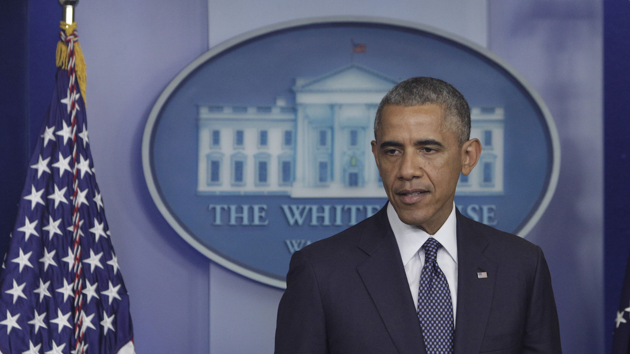
Digital Globe/NATO
It has become quite hard for Vladimir Putin to deny that Russia’s activities in Eastern Europe aren’t benign. On Thursday, Ukraine’s president, Petro Poroshenko, announced that “Russian forces have actually entered Ukraine.” And at a State Department briefing, spokeswoman Jen Psaki called Russia’s activities “an incursion and a violation of Ukraine’s sovereignty.”
The most striking evidence comes from NATO, which has released satellite photos of what it calls “concrete examples of Russian activity inside Ukraine.”

According to NATO, the image above depicts a Russian convoy carrying artillery in Krasnodon, an area of Ukraine currently controlled by pro-Russian separatists, on August 21.

This shows artillery setting up in firing positions in Krasnodon. “This configuration is exactly how trained military professionals would arrange their assets on the ground, indicating that these are not unskilled amateurs, but Russian soldiers,” a NATO press release notes.

This image shows side-by-side photos of Rostov-on-Don, about 31 miles from the Ukrainian border, taken two months apart. The photo on the left, taken on June 19, shows the area mostly empty. The photo on the right shows the same area on August 20 occupied with tanks and other armored vehicles, cargo trucks, and tents. These units “are capable of attacking with little warning, and could potentially overwhelm and push-back Ukrainian units,” according to NATO.

According to NATO, this image shows Russian six artillery pieces, probably 6-inch howitzers, positioned six miles south of the Ukrainian border. The guns are pointed toward Ukraine.











